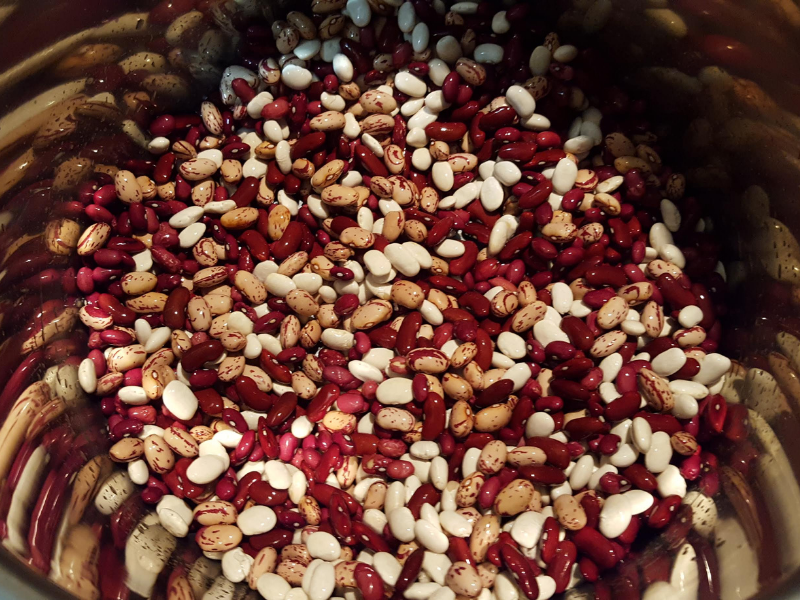
This is a reminder that the wild retains gene diversityand this needs to be actively preserved or at least protected.
I am no particuloar fan of giant fields because they usually deeply suppress border biomes. In fact i want to see these border bands made robust and always include tree plantings.
Going further i do think all monocultures need to be a combo of wide long machine oriented crop plantings separated by robust border plantings supporting the local biome itself along with enhanced tree and bush plantings..This preserves a broad insect population able to balance off explosions of preditors. Likely not that simple, but pure monocultures are proven to be terribly vulnerable..
Old beans may have new uses
Crop wild relatives of beans topic of blog
September 23, 2021 – Each year, Crop Science Society of America celebrates Crop Wild Relative Week to bring attention to the importance of these ancient relatives of today’s crops. The September 22nd, 2021 Sustainable, Secure Food Blog highlights the importance of ancient beans in breeding new types of bean crops.
According to blogger Miranda Haus, “beans were first domesticated around 8,000 years ago in Central and South America. During this time, humans shifted their focus to breeding bigger beans that are tastier and easier to harvest.
One problem that has been hard for breeders to overcome is reducing yield loss due to fungal root pathogens. One of these is Fusarium Root Rot and Fusarium Wilt. In some instances, Fusarium root rot can cause a farmer to lose their entire crop.
Every crop we eat was once growing in the wild, undisturbed. These versions of crops are called Crop Wild Relatives. Over the last 10,000 years humans domesticated food crops to make them easier to grow, harvest and even more nutritious. During domestication, humans only took select individuals from the entire population and began to grow and cultivate plants from this subset of seeds.
By selecting the best-tasting or highest-yielding beans, farmers inadvertently reduced the genetic diversity. This doesn’t just apply to beans it applies to all crop species. As an example, let’s think about aliens to coming to Earth and abducting the population of a small town to populate a new planet. Any small town in the world cannot represent the genetic diversity of our entire planet! So, you can see the new planet would suffer from reduced genetic diversity. That’s what has happened with crop diversity during domestication.
Wild beans have retained more genetic diversity and may exhibit resistance to Fusarium root rot, a feature not present in cultivated beans.
The USDA maintains genebanks throughout the United States. that contain collections of seeds from all over the world. These collections are freely available to anyone, and the USDA works closely with researchers to create catalogs of traits for the seeds within their collections.
Haus’ team evaluated the USDA wild bean collection to see if they could find wild beans that might be resistant to Fusarium Wilt. They infected seedlings with two pathogens which cause Fusarium Wilt and Fusarium Root Rot. They rated the wild beans, specifically looking for those that did not show symptoms of either disease.
From the entire collection of 248 wild bean lines, they found twenty-one lines with resistance to Fusarium Root Rot and sixteen lines with resistant to Fusarium Wilt. They are attempting to crossbreed some of the resistant wild beans with cultivated beans, to see if the new beans will also be resistant to Fusarium. They have also made our information freely available so other breeders can start introducing resistance into their lines as well in their paper published in Crop Science Journal.
About us: This blog is sponsored and written by members of the American Society of Agronomy and Crop Science Society of America. Members are researchers and trained, certified professionals in the areas of growing the world’s food supply while protecting the environment. Members work at universities, government research facilities, and private businesses across the United States and the world.
Photo: A prepared bean dish. Credit: Miranda Haus
About us: This blog is sponsored and written by members of the American Society of Agronomy (ASA) and Crop Science Society of America (CSSA). Members are researchers and trained, certified professionals in the areas of growing the world's food supply while protecting the environment. They work at universities, government research facilities, and private businesses across the U.S. and around the world.
No comments:
Post a Comment